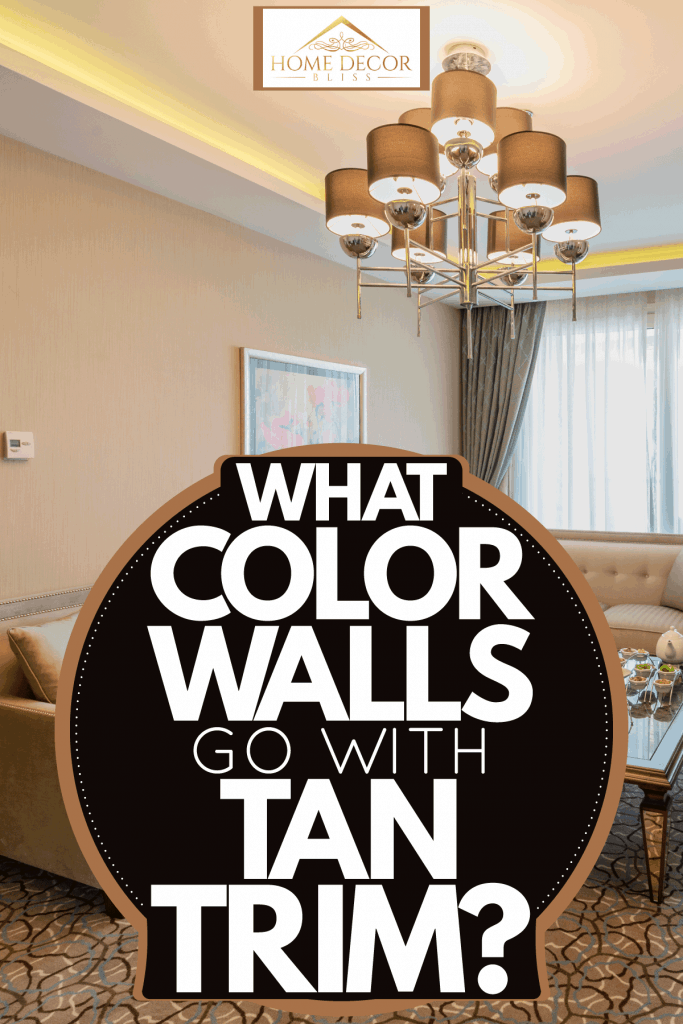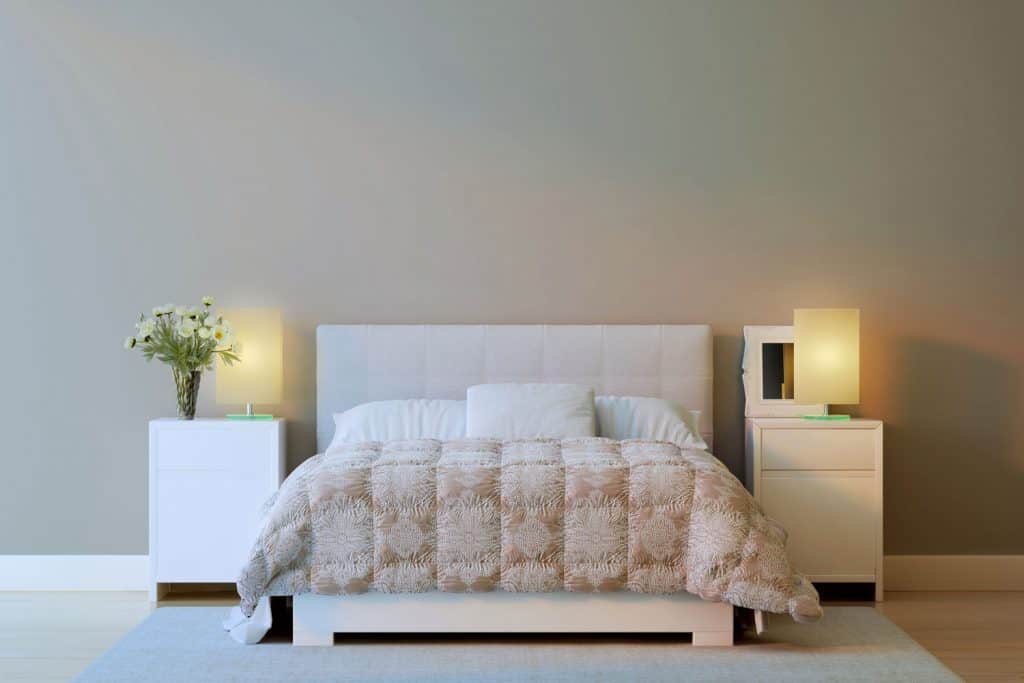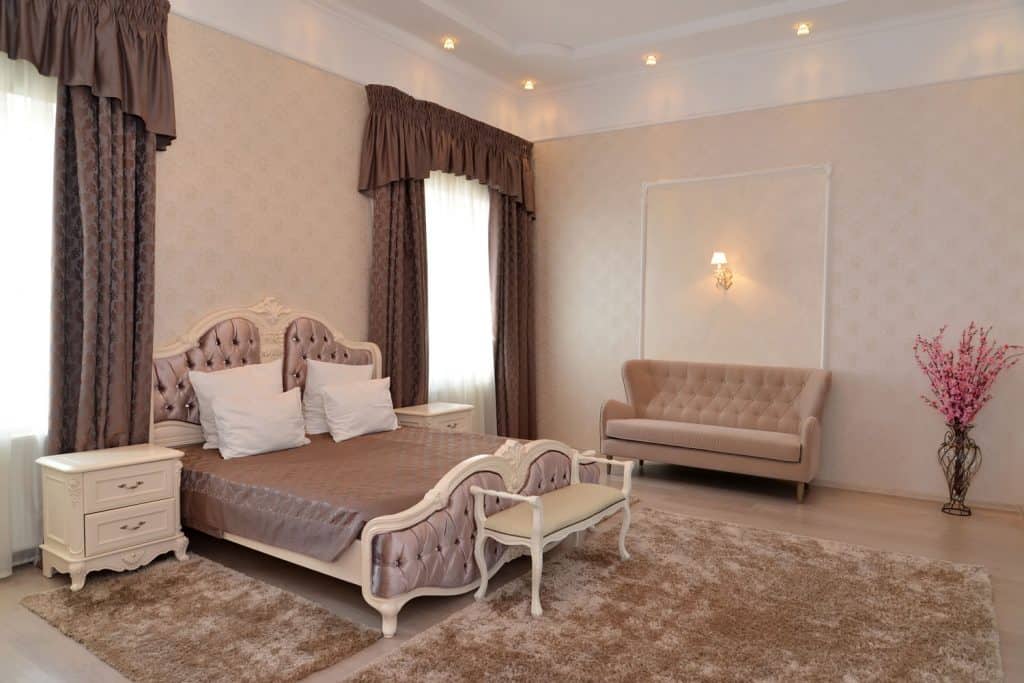Inside the house, trim can refer to the baseboards, crown moldings, and casing. Because these additions run throughout the home, it is important to coordinate their color with the color of your walls. Traditionally, the trim inside a house is painted to be the same color as the walls. But you can use the relationship between different colors to create a unique emphasis. We have carefully put together a guide on which wall colors will go with cream or tan trim.
If you have cream or tan trim, then the best color for your walls should coordinate with their temperature and the overall style of the room. That is because cream and tan are warm near neutrals, and will pair with any other neutrals or colors. The walls can also be either lighter or darker than the trim if used carefully. Here are the best wall colors to consider:
- White
- Grey
- Brown and Beige
- Blue or Green
- Pink or Yellow
Because walls are so noticeable, it is always important to balance them out with the trim. Trim is a framing device that can greatly change the look of the walls, as well as the room overall. Keep reading to learn what colors will go together for tan trim, and how to match the trim throughout a house.

What white goes with cream trim?
Pure white is simply a bright neutral that has no actual color. But it is possible to use different shades of white by using different undertones. These undertones can result in a warmer or cooler version of white.
Consider that the color cream is created by mixing white with some amount of yellow. This means that warmer shades of white will usually go better with cream trim. You can also find shades of white with undertones of red.
Most of the time, it is best to avoid coordinating identical colors in any interior design. But trim is an exception because it can function as an extended limb of the walls, windows, or doors. Otherwise, identical colors are likely to cause redundancy.
This can always be avoided if you remember to coordinate any pair of colors so that they remain near each other. This is true whether you have made one lighter or darker. There should never be more than two to three shades between matching colors.
Therefore, it is possible to use whites that have yellow undertones. They will look similar to cream, but can still be distinguished by the shade and temperature.
Do cream and grey go together?

We sometimes add affiliate links and content that was curated and created by our team with the help of advanced ai tools to help showcase the best design styles.
It is common to see grey and white go together because they are both neutrals. Because cream is partly made of white, it usually goes with grey.
It is possible for grey walls to go with cream trim in order to intentionally create contrast. Grey has a naturally cold temperature that will contrast with the warm yellow tones of the cream trim.
But grey is a pure neutral, and has no true color. As such, it will not overwhelm the cream trim as any ordinary dark colors would. This would keep the emphasis on the trim without disrupting the balance in the room. You can also use lighter shades of grey to close the gap between the temperatures.
Brown and Beige
Brown is a near neutral that is warmer than grey or black. All neutrals agree because they do not have color. However, brown is only a near neutral and it is also considered to have similar tones to orange.
Therefore, brown has both the flexibility and warmth to make it an ideal match for cream trim. They will both agree because of their similar temperature, and because they have neutral properties.
This will also allow brown to occupy a lot of wall space throughout the home without becoming too distracting. Still, it is important to consider that brown walls may not agree with some interior designs. Brown might be considered too similar in appearance to wood.
Similarly, beige is usually a mix of various browns and yellows. Because beige frequently has yellow undertones, it will blend well with the yellow undertones in cream trim.
Blue or Green
Cream has yellow tones, and yellow is close to orange on the color wheel. Therefore, blue walls can go with cream or tan trim. This is because the color blue is complementary to orange on a traditional color wheel. Complementary colors are opposites, which creates a natural and appealing contrast.
Because basic green is made by mixing blue and yellow, that color will also be able to work with cream trim. Both blue and green can be used with darker or lighter shades. Still, blue is a naturally cool primary color. Blue will always maintain its temperature even if you choose to use brighter shades. Instead of contrast, green will share the same warmth and yellow undertones as cream.
Cream and tan can both have elements of brown in their appearance. Brown is usually associated with nature. Because blue and green are also used to imitate nature, these are ideal colors for walls that have cream or tan trim.
Pink or Yellow

These are brighter colors that are not often used on walls because they can appear louder than usual. But they still have their place in certain interior designs. Softer pinks and pale yellows can often be used in rooms that are intended for cheerful areas, such as children’s bedrooms.
Using the correct shade of pink and yellow will agree with the yellow undertones in cream trim. Alternatively, tan trim could be used to temper the impact of bolder colors on your walls.
What accent colors go with tan?
The purpose of an accent piece is to stand out from the rest of the scene. This is difficult to achieve with tan because it is a pale brown and can potentially work with any color. Therefore, it is best to use accent colors that will contrast with the temperature of tan that you are using.
Blue will create contrast because of its complementary relationship with orange. Grey or black will create contrast because they are much colder than tan. Black walls can sometimes make a room appear to look smaller than it actually is. Therefore, black is usually avoided for walls. But an accent does not have to be a wall. You can use black furniture, curtains or rugs instead.
Should walls be darker than trim?
It is possible for the walls to successfully look either lighter or darker than the trim inside the house. This is subjective because either result might be desirable. If you choose to make the walls darker than the trim, then your walls will become the focus.
If the walls are lighter than the trim, then the trim will be emphasized instead. This will create clear borders at the edges of your floors and ceiling. That can make it easier to avoid causing damage to the baseboards along the walls from moving furniture or high foot traffic. This costly damage can result in having to fix the trim, which may require you to add wood filler and re-stain.
Click here to find this wood filler on Amazon.
Darker trim will also highlight the casing around the windows and doors. This may be more ideal if the trim is decorative, unless the room is meant to have a simple minimalist style. You can read the post, What Color Flooring Goes With Dark Trim?, for help styling with dark trim.
Should all the trim in a house match?
It is best to match all of the trim throughout your house in order to maintain balance through consistency. Some of the rooms in the house may be styled differently. Trim is a useful way to unify rooms of various purposes and designs.
Also, consider that there are three basic kinds of trim. The baseboards protect the foot of your walls. The crown molding is placed where the top of the walls meet the ceiling. The casing trim wraps around your windows and doors.
Therefore, the different kinds of trim are always visible within the same room. Any differences between them will be immediately noticeable. You can also read the post, Should Baseboards Match Door Trim Style And Size?, to learn more.
Summary
It is possible to completely change the appearance of a room by coordinating the colors of your walls and trim. Both will run throughout the house and shift where the focus of the scene is. Therefore, it is important to understand the results of combining different colors. Cream and tan trim are highly flexible, but it is easy to use wall colors that will agree or create contrast with their temperature.

